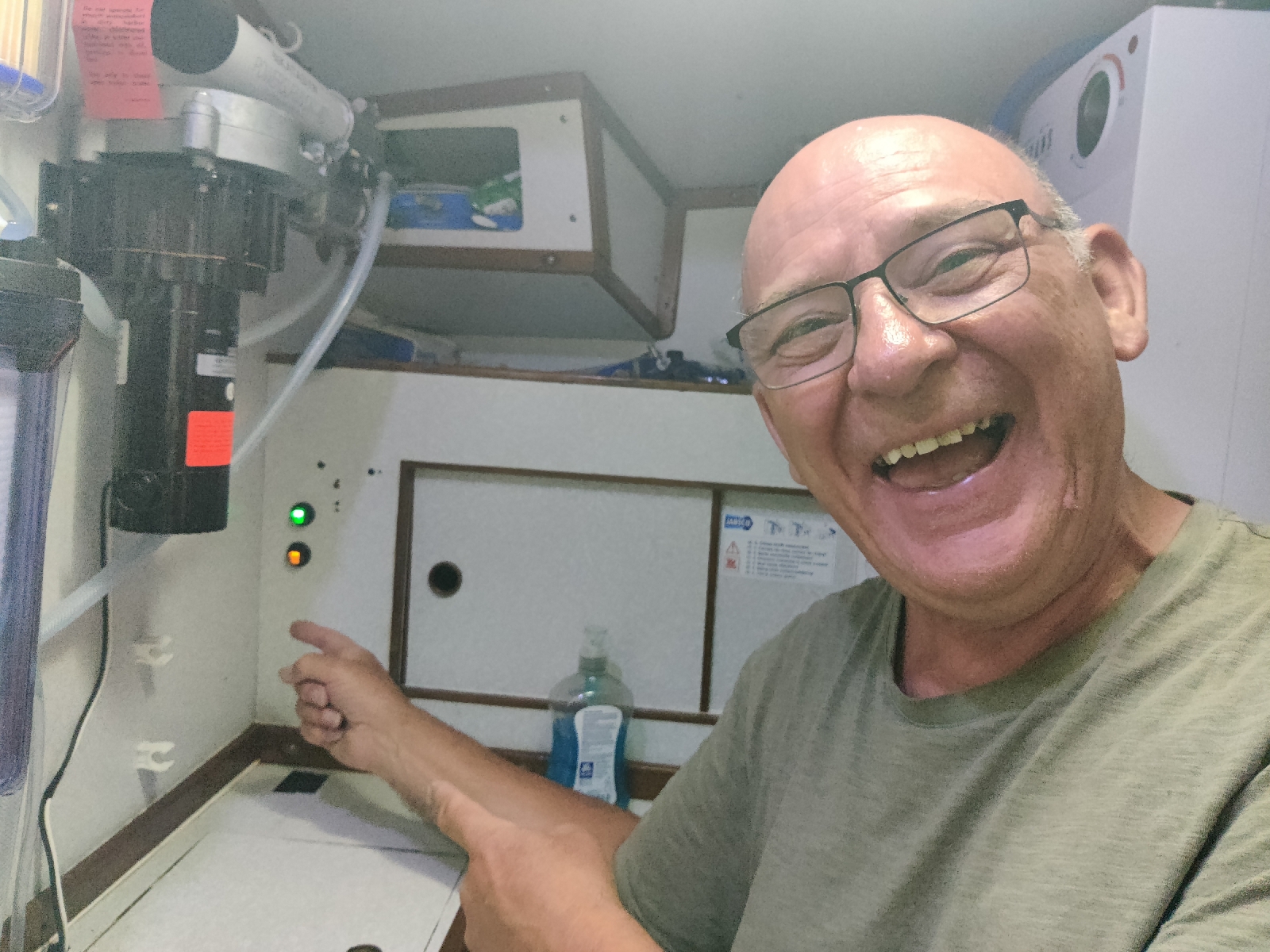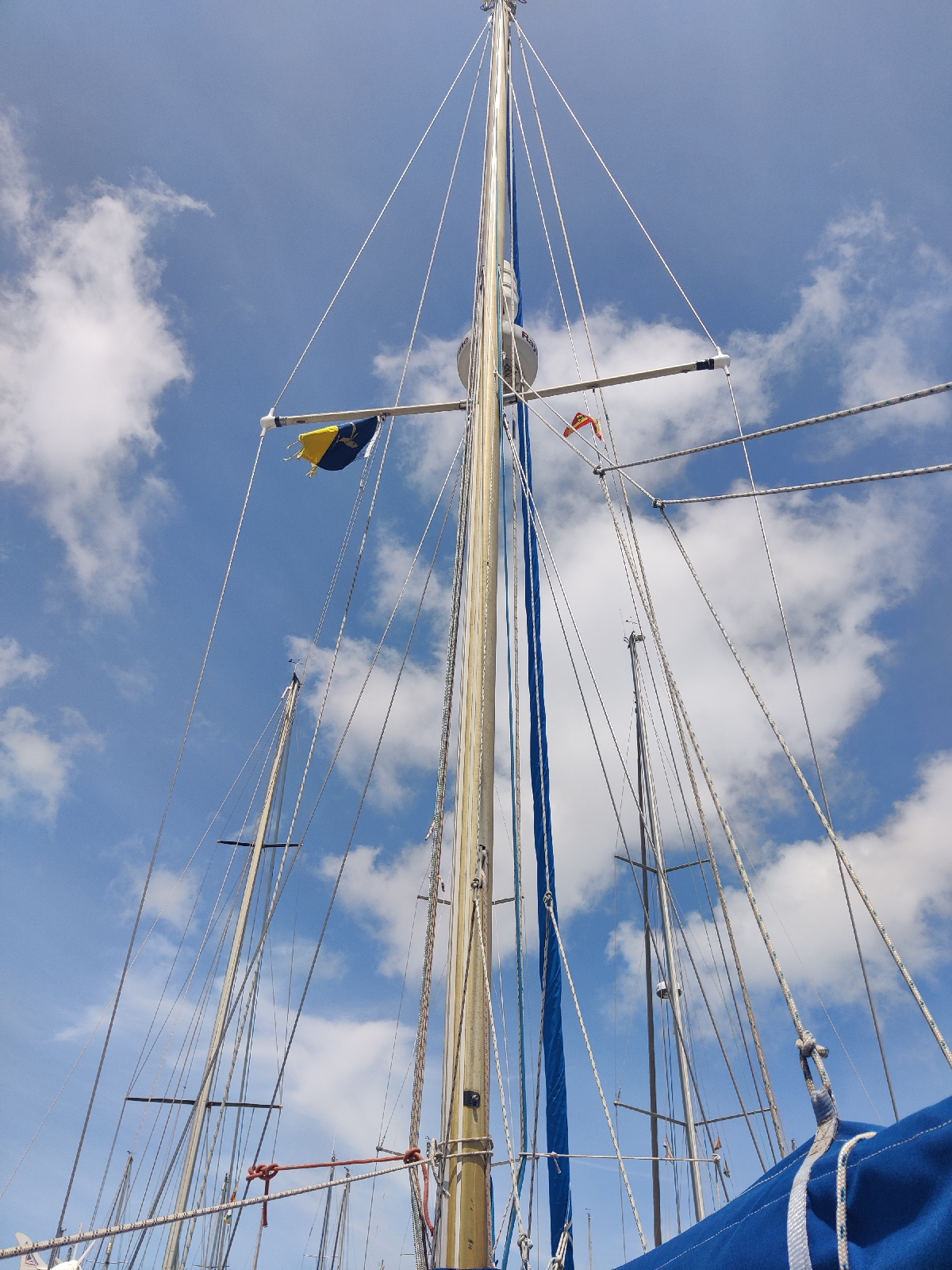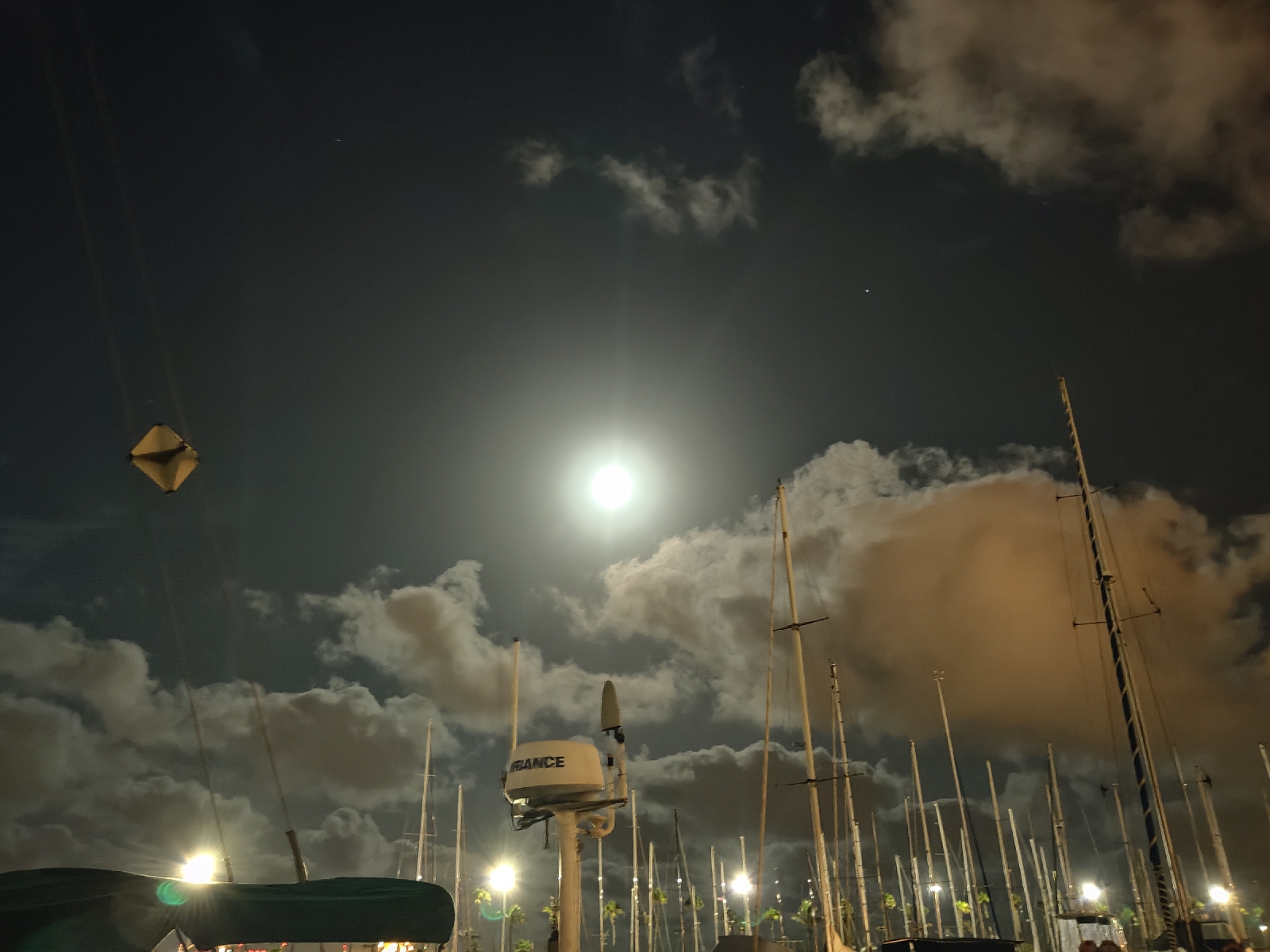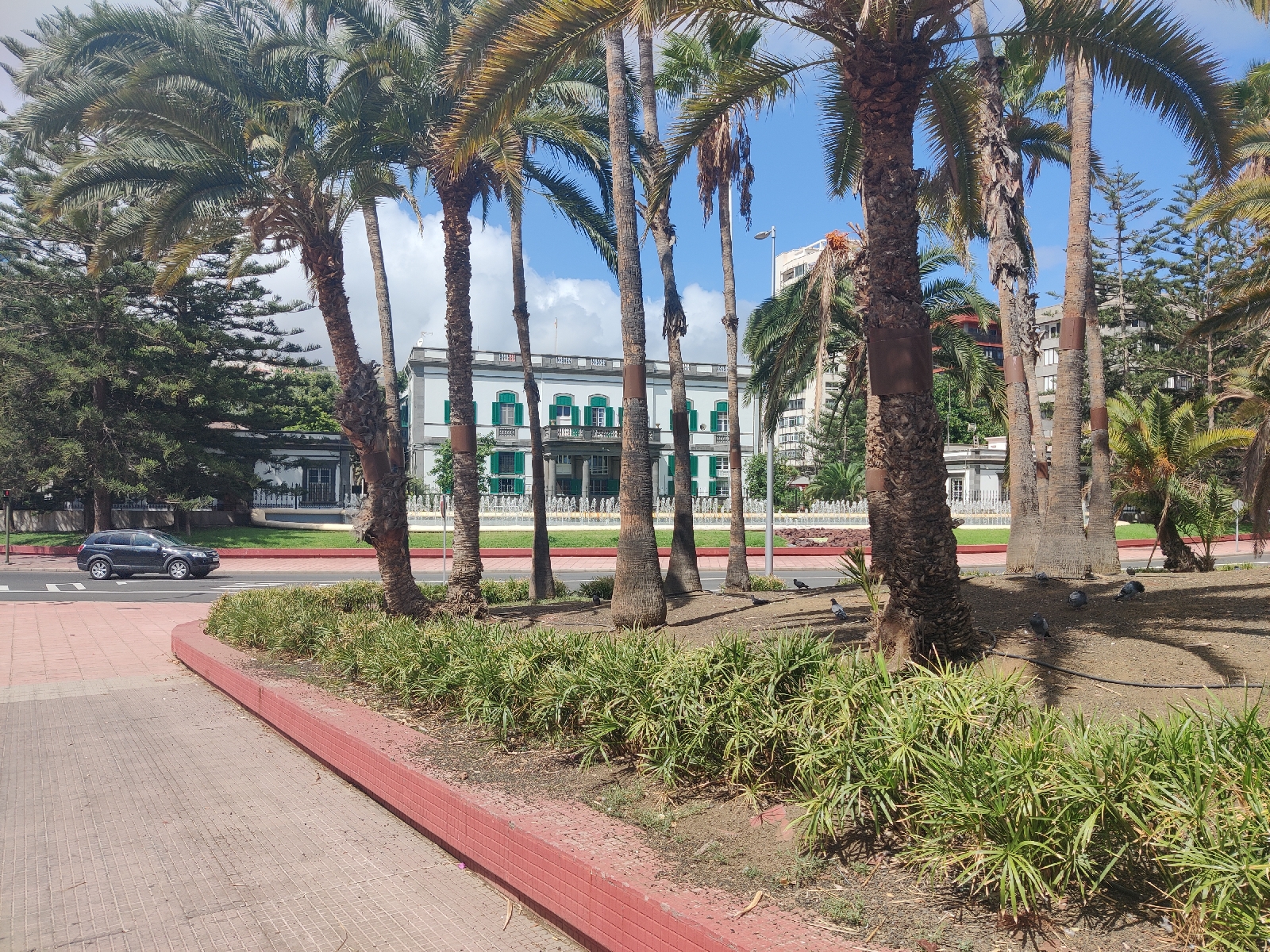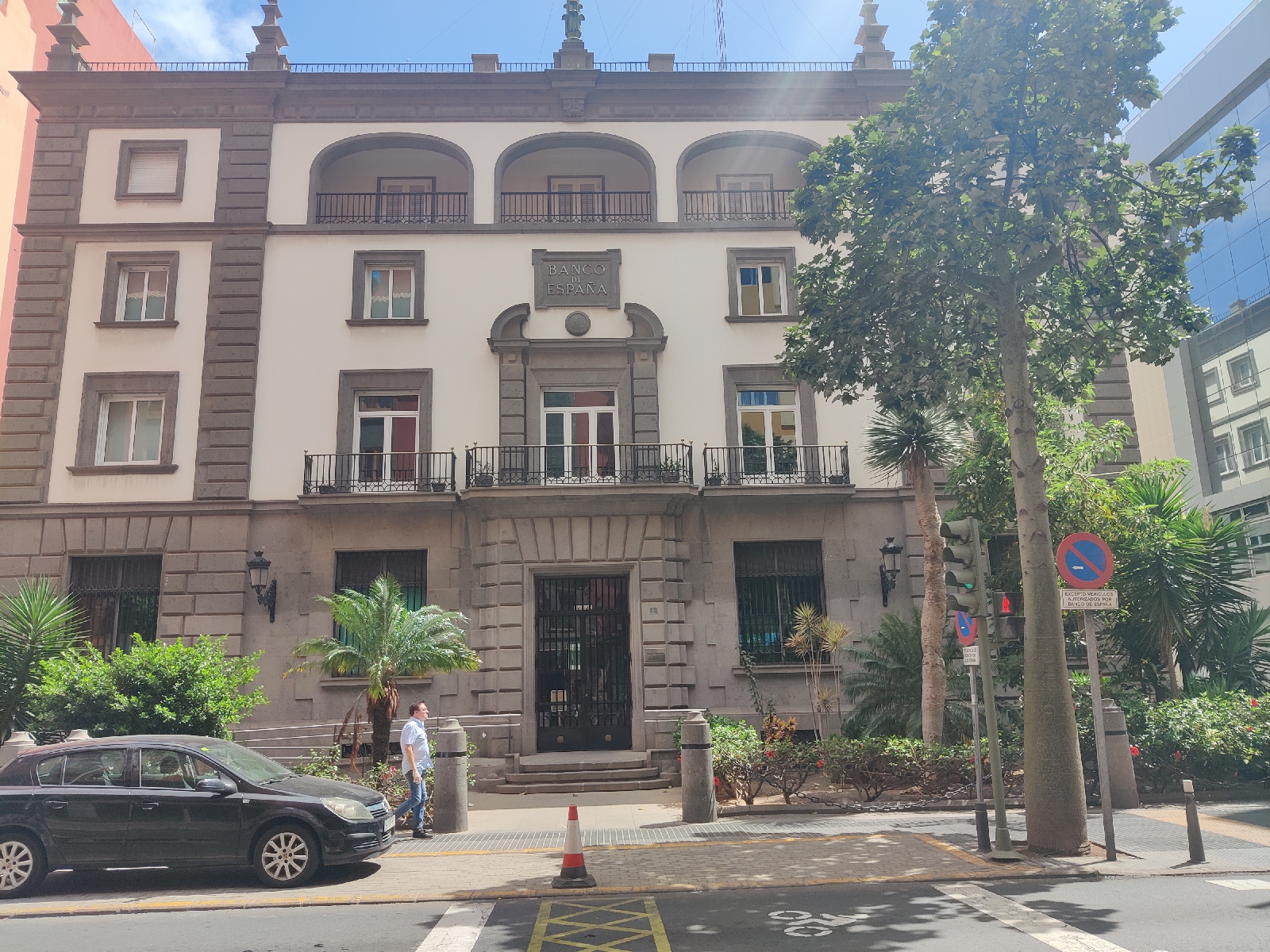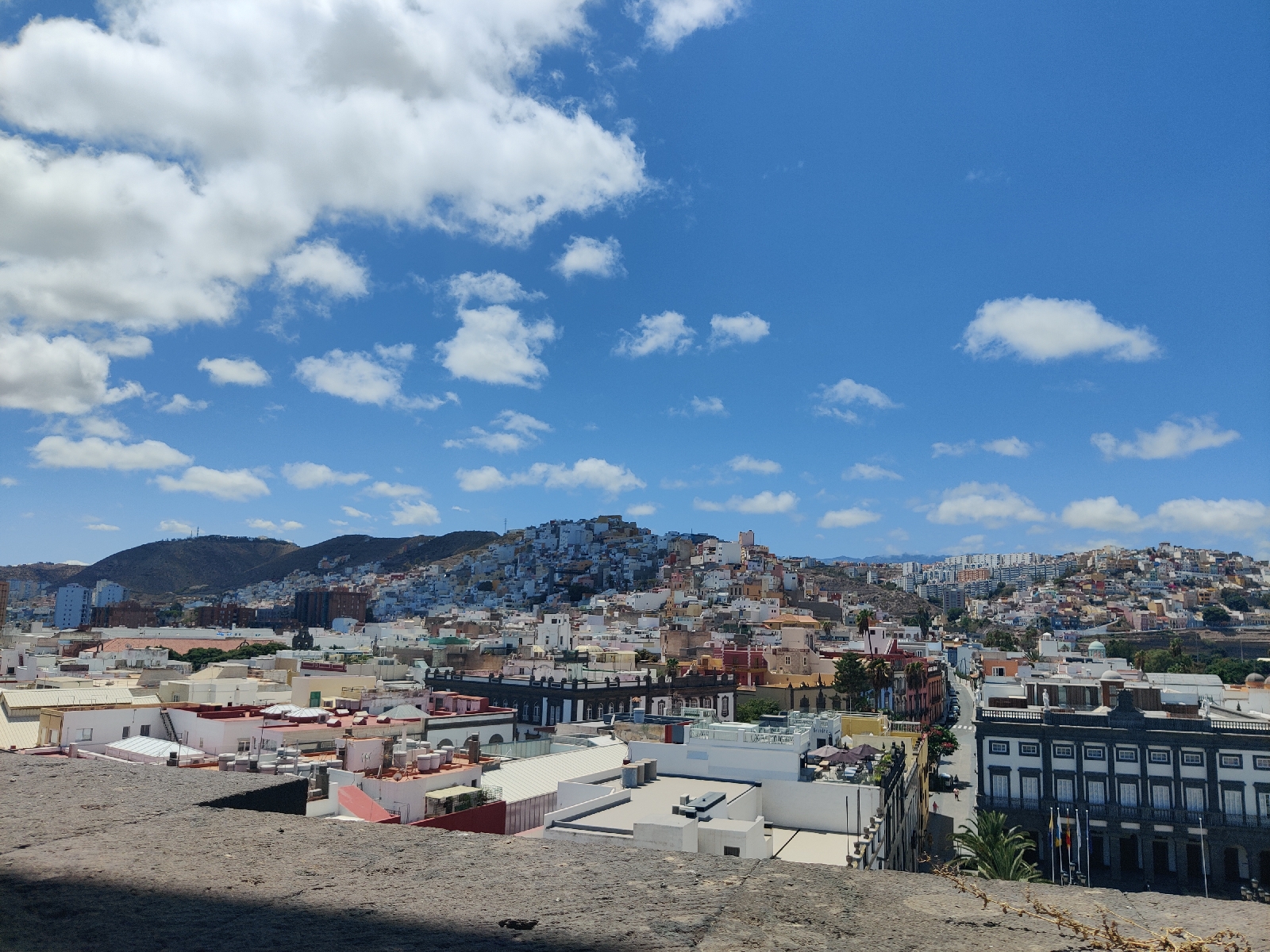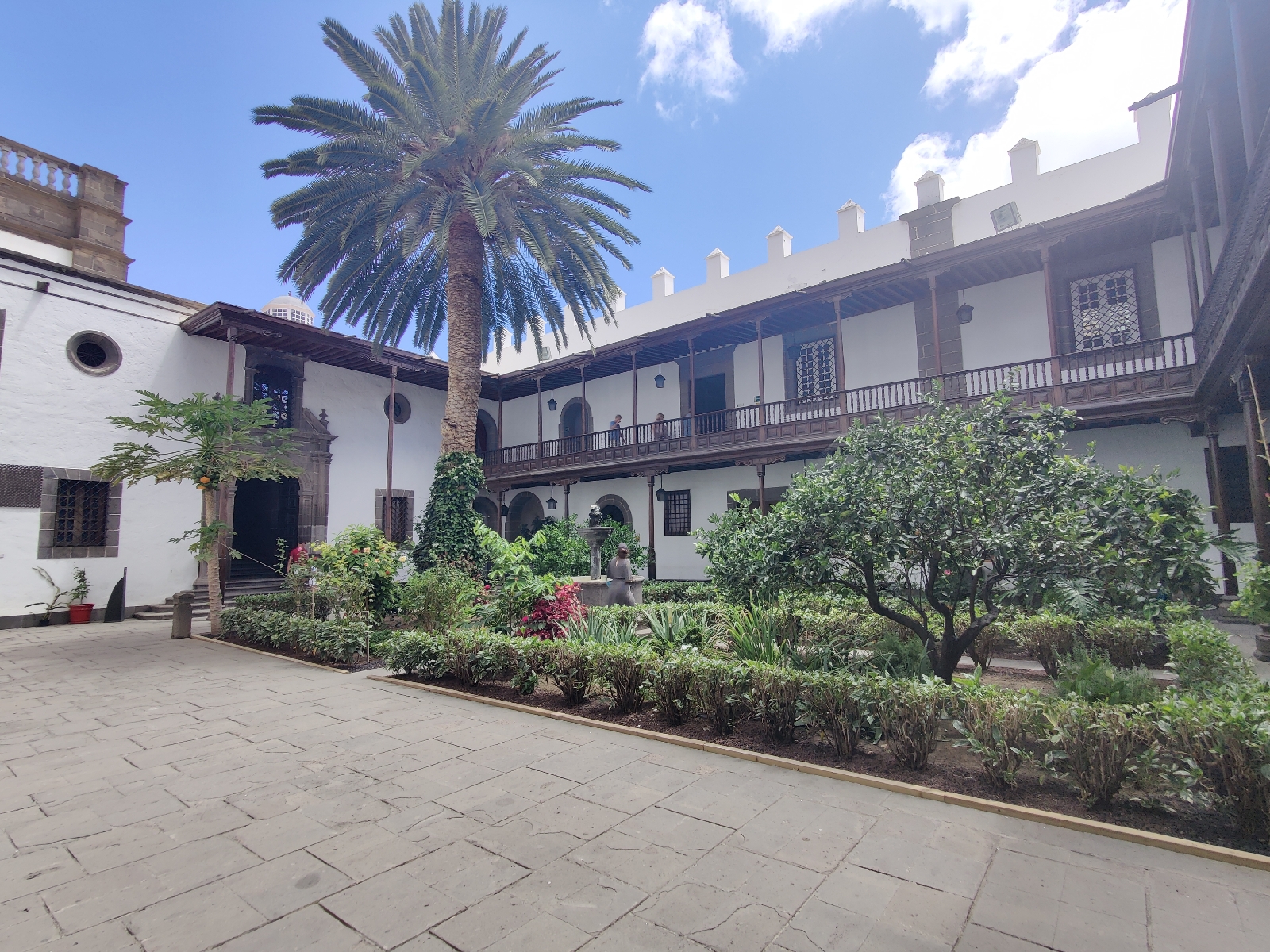Above, the square/plaza opposite the very impressive Cathedral (see next) in the old town..
We've been here a week now but it's difficult to know where the time has gone. We have though got through some of the seemingly endless list of boat jobs.....
and we've enjoyed some social time including doing our bit to support Anglo-French relations.
It also appears that we should be able to keep our berth here in Las Palmas for the duration of Sharon's and Stephen's' family visit commencing 12th September - When we arrived the very friendly and helpful marina man warned me that we could only book ahead for seven days at a time and that we would be subject to seven days notice to leave because of the priority given to the ARC boats which start arriving in Las Palmas about now. When I went to book a further seven days yesterday the same guy was very laid back about it and said, come back in about a week or so (pointing to the 16th September on the Calendar) and pay me then and tell me how much longer you want to stay! 🤞
Our first full day here, last Tuesday was a pretty lazy one. To coin a Monty Python phrase, it was a sort of "all of a sudden nothing happened" type of day. I did nothing at all apart from my laundry and making a start on updating this blog with an account of our time in Madeira.
Ah, I forgot the small matter of spending, or at least, commiting to spend, a large wod of cash and in the process wiping out my emergency sailing budget in one go. After a vidio call with Will from Hydrovane, I finally ordered the necessary replacement parts for the Hydrovane. They will be delivered to my Spanish friend Agustin who lives in Pasito Blanco on the southern tip of the island.
Wednesday was another day of rest and blog writing while Mick went off to explore the town.
That evening we enjoyed the first of our Gran Canarian social events - we met up with Ines' globe trotting brother, Russell, who having spent many years in Columbia, Thailand and Japan has spent the last few years in the Canaries and has most recently moved to Las Palmas from Lanzorote. Russell took us to a lively bar/restaurant in the modern city centre where we spent a most enjoyble evening. Stephen and Ines will be staying with Russell when they visit with Sharon in a couple of weeks.
On Thursday we got stuck into some serious boat maintenance however. I spent the day crawling around in cockpit lockers and under the cockpit floor maintaining the autohelm and main steering gear.
This required becoming something of a contortionist given the tight and awkward spaces involved. It was also quite dirty work with generous helpings of crease and grime and as a result I looked non too savoury...
Whilst I was performing these antics Mick was installing switches in the water maker's electrical circuit. A fiddly and time consuming job. He's very pleased with the results because they light up when on!
Indeed because the boat is to be effectively harbour bound for the next two months we have had to "pickle" the water maker's membrane. This involves sucking up a cocktail of chemicals into the membrane housing to kill off any biological growth that may be present and which would otherwise clog up the delicate membrane through which the sea water is forced when the water maker is in operation.
Friday was another day of boat jobs and one where once again I spent a great deal of time up the mast.
I had four jobs to do up there. One was to replace the pulley block through which the cruising chute halyard ran (or rather was supposed to run). This you may remember disintigrated on our passage from Vigo to Porto Santo. A closely related job was to check the other hardware on top of the mast to ensure nothing else was suspect. The broken block was clearly no where near robust enough for the job it was doing and I really should have noticed that before and replaced it in 2021 when I replaced the shackle that attached it to the mast head. Or perhaps I did - because it's most likely that the original block would not have survived chrashing to the deck - but only had a flimsy block to hand and then forgot all about it! Thankfully all the other fittings up there looked sound and robust.
A further job was to re-reeve the mainsail haliard should run through a sheeve at the top of the mast and down the inside of the mast and out through another sheeve at the bottom but which for the last few weeks was, following the parting of the halyard from the sail (for the second time since buying the boat) on the passage from Plymouth to Falmouth, reeved on a temporary basis through an external block attached to the top of the mast. Having spent hours doing this previously with the help of my friend Bill on Bonny's mooring on the Medway, I was prepared for another long and tiresome escapade. What made this job such a fiddly one was that Bonny's mast was lined with slabs of polysterine - presumably to stop or at least minimise the noise halyards make when they flap around inside the mast. All well and good, but it makes running a length of rope from the top to the bottom an absolute nightmare - it keeps getting stuck! Bill and I only managed to do it before by removing quite a lot of the polysterine! Perhaps as a consquence, this time it would be easier!
Step one: lower the genoa so that I can use the genoa halyard which also runs through a sheeve at the top of the mast to climb up (I had previously used a halyard that went through the block that broke!!!)
Step two: remove the sheeve at the bottom of the mast through which the halyard is supposed to exit
Step three: put absolutely everything (of course one always forgets something at this point) I need in a bucket and haul it up the mast on a spare halyard
Step four: climb up the mast using the mast climbing kit (rather like a cross between rock climbing gear and a bosun's chair) with a safety line attached to another halyard by a clever device that enables you to slide it up the halyard but which jams tight if weight is applied to it.
Step five: tie one end of long length of this twine on to one end of a piece of bicycle chain (this is ideal for pushing over the top of the sheeve and provides the weight to pull the twine down the mast).
Step six: lower the chain and twine down the inside of the mast until you think it's near the bottom sheeve.
Step seven: call Mick up from below and ask him whether he can find the bicycle chain
Step eight: jiggle the chain up and down (he hears it but can't see it) - repeat numerous times
Step nine: pull the chain and twine back up the mast and do what should have been done first - lower it down the outside and mark the twine so that you know when it will reach the sheeve:
Step ten: repeat step eight repeatedly!
Step eleven: Mick looks for various devices to help locate and retrieve the chain - takes ages!
Step twelve: Mick locates bicycle chain and pulls end out of the mast but it gets jammed!
Step thirteen: have a shouted debate about what to do next - decide to remove the bottom sheeve through which the genoa halyard runs to see if we can un jam it there. This is the sheeve through which the halyard on which I am suspended, runs and so....
Step fourteen: come back down the mast!
Step fifteen: - lunch!
Step sixteen: start to remove sheeve before realising that the track for the storm trysail (a small sail to use in place of the mainsail in gales) runs over it and so it cannot be removed without also removing about 50 rivets holding the track to the mast!
Step seventeen: abandon that idea.
Step twenty: remove the sheeve for the topping lift (that's the piece of rope that runs from the end of the boom to the top of the mast and down to its base so that the boom can be held up when the mainsail is not set).
Step twenty one: find the chain jammed at the top of the sheeve and spend ages fiddling and jiggling around with scredrives and things until the chain miracously unjams and falls down to the mainsail sheeve.
Step twenty two: pull chain out of mainsail sheeve until it jams again!
Step twenty three: more fiddling and jiggling until eventually the chain comes out with the twine still attached.
Step twenty four: go back up the mast, tie a stronger length of chord to the top end of the twine.
Step twenty five: Mick gingerly pulls on the twine until the chord comes out the of the sheeve.
Step twenty six: attach the halyard to the chord and tape up carefully to achieve a smooth join.
Step twenty seven: Mick pulls on chord until the halyard exits the mast!!!!!
Step twenty eight: reeve the new emergency halyard through the external block (this so that if heaven forbid, we lose the halyard up the mast again - we can get the sail back up easilly).
Step twenty nine: climb back down the mast
Step thirty: replace the two sheeves at the bottom of the mast and put everything else back in its proper place
Step thirty one: drink a cold beer!
Whilst all this was going on and in between his repeated trips out to the base of the mast, Mick was working down below on trying to coax our portable fridge which can freeze stuff and can therefore - if it works - store frozen meat and most importantly ice during our long passages and when at anchor in picturese Carribean bays! Initially however, his efforts were in vain, the machine refused to power up at all - which was a backward step. Subsequently, however a second spell of work proved successful and we now having a working freezer!
Friday 1st of September included the night of the full blue moon and very bright it was too. My granddaughter Maliyah was doing a school holiday project on the moon and so I sent her mum lots of photos of it over the harbour which was just as well because of course it was cloudy at home and they didn't see it.
On Saturday the crew were granted shore leave and went off to explore the old town and very attractive it is too with its magnificant cathedral and colonial era plazas and buildings. Like Gijon, there were numerous narrow streets with restaurants and bars a plenty.
Saturday was also the day we met Franck, and enigmatic Frenchman and ex Ship's Captain, who seems to have spent the last 10 years or so sailing around the world in various sailing boats.
Some years ago on his previous boat - a modern racing machine with a swinging keel he was almost sunk in a storm of the South African coast. The keel strated to part company with the rest of the boat and his sails blew out. Somehow he managed to make port and affect temporary repairs and then sailed on to Horta in the Azores where he found his current very tough looking 50 foot aluminium boat - "Sunditude" for sale. He then sailed his previous boat on to Jamaica where he had found a buyer. He's in Las Palmas waiting for a new set of sails to be made and undertaking various other repairs having experienced yet more bad weather in the recent past. He's a very entertaining and fun loving character. Not quite 60, the internet age seems to have missed him, he doesn't even seem to have a mobile phone! He does though have an email address so we'll be able to keep in touch. He will probably head down to the Cape Verde Islands in a couple of months too.
Sunday was another day that seemed to disappear without very much happening. I walked round to the Marina office and booked our berth for another 7 days and did a couple of minor jobs.
Yesterday, Monday, was a more productive day, I managed to service all the cockpit winches and Mick got the freezer working again.
This afternoon - Tuesday 5th September we're meeting Malcolm, a fellow OCC member, for a beer, who may be able to help us resolve the ongoing issues with our Satphone!
Mick flies home for 6 weeks or so tomorrow and Sharon, Stephen & Ines and kiddies fly out to join me for a week on the 12th. I'll plough on through the still growing jobs list whilst I'm waiting for them to arrive.





